
Your lake or pond is meant to be enjoyed. Summer months should be filled with fishing, boating, swimming, and lots of fun around the water. However, if lakes and ponds are not properly managed throughout the year, these activities can be interrupted due to many factors like nuisance and invasive weed growth. Invasive plants are not inherently bad, but when they are moved from their native ecosystems, they reproduce more rapidly. This explosive growth can interrupt recreational activities by ensnaring boat propellers and fish hooks, impeding kayaking, and, in unfortunate instances, drowning swimmers. Overgrown invasive weeds can also reduce oxygen levels and can hinder a waterbody’s natural ability to regulate itself. Likewise, native plants that serve as food and habitat for local wildlife can be threatened and destroyed. That’s why it’s crucial to have effective pond weed control and lake weed removal.
Achieve Clean, Beautiful Water
- Invasive Aquatic Weed Control
- Invasive Aquatic Weed Control


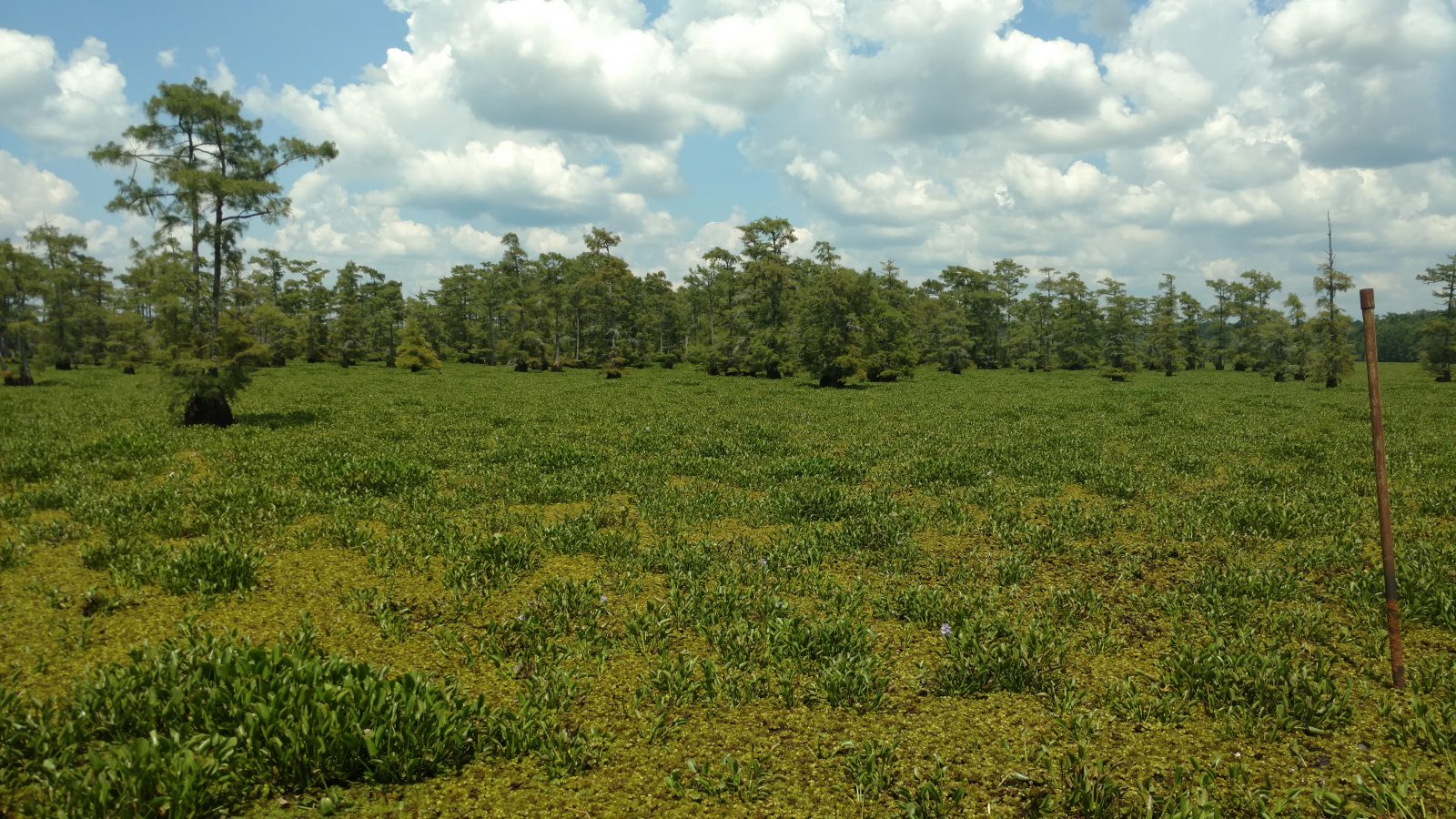
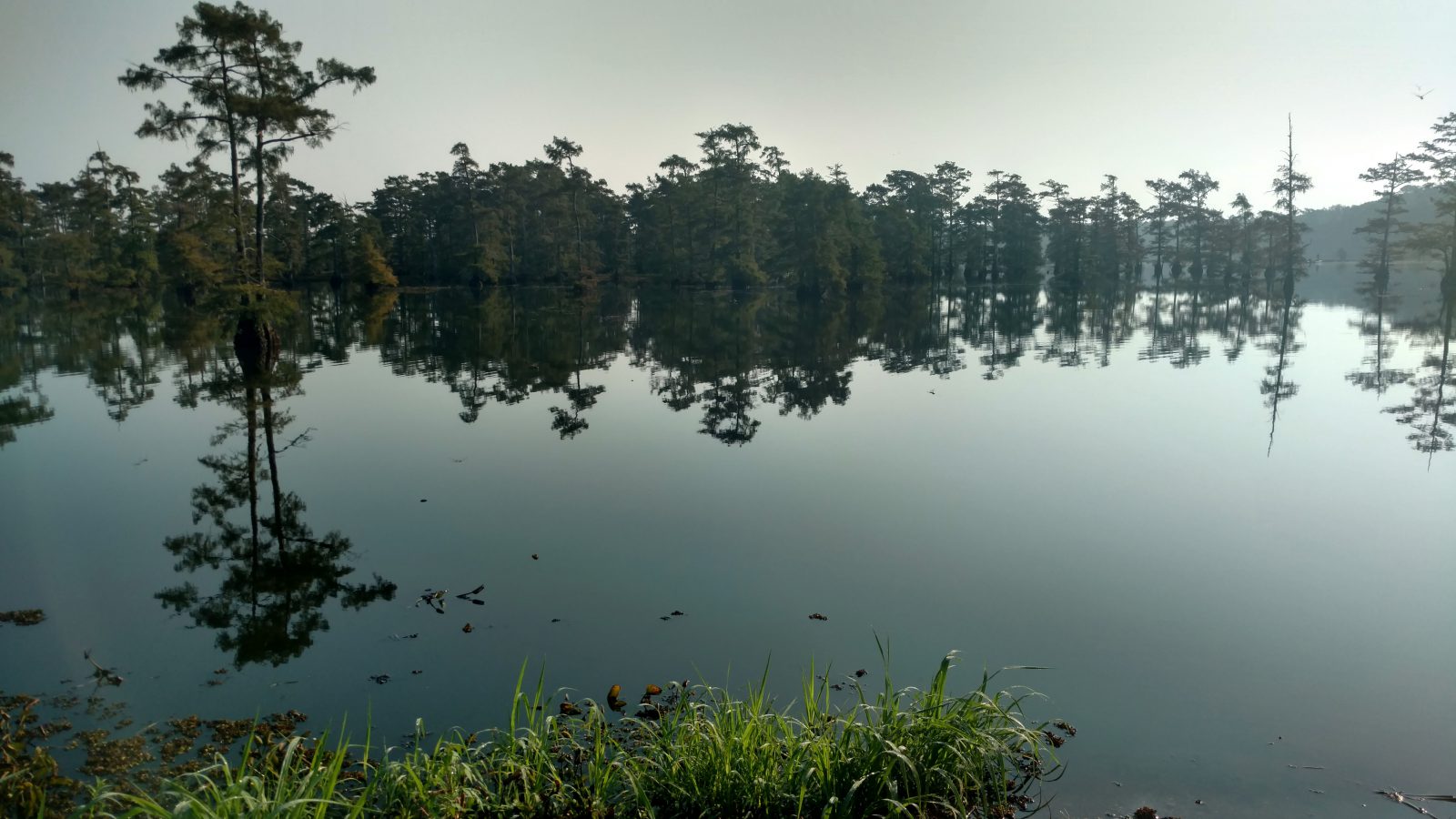
Identifying The Weeds in Your Water Body
Aquatic weeds come in many forms, including submerged, floating, and emergent species. Submerged weeds grow from the bottom of the waterbody and sometimes “top out” at the surface. Floating invasive weeds have vascular root systems, but these are generally not rooted in sediment under the water’s surface. As such, they are known to spread very rapidly throughout waterways and can completely cover the surface of a lake or pond. Emergent plants are those that stand upright in the shallow water near lake and pond banks or across vast wetlands. They create complex root systems that can quickly dominate shorelines and outcompete native vegetation, and in some cases, destroy hundreds of acres of marsh and wetland areas. The vast differences in each of these aquatic weeds mean professionals rely on a variety of management techniques for pond weed removal.
Management Approaches For Invasive Aquatic Weeds
Aquatic weeds and algae are an inevitable problem for lake and pond owners. When waterbodies have excess nutrients or low dissolved oxygen levels, these issues can run rampant. Here are the most common methods for aquatic weed control:
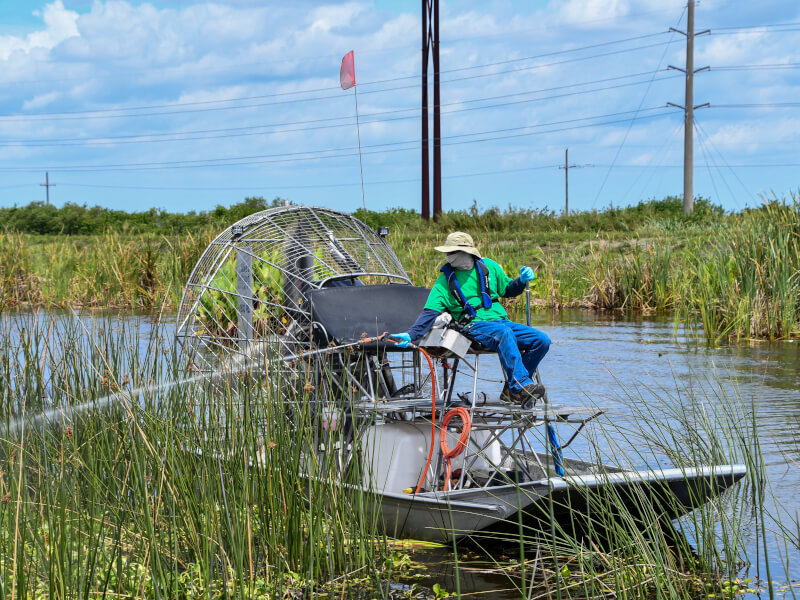
Herbicides
EPA-registered herbicides are a popular solution for pond weed control. These products are optimized, meaning they specifically affect the unique growth mechanisms of the invasive plant without impacting native wildlife or interfering with recreational activities. They are highly regulated by the Environmental Protection Agency and are safe for non-target plants and animals when applied by a licensed applicator in accordance with the product label. When professionally applied with backpack sprayers, boats, or modern drone technology, stakeholders can rest assured that management efforts are as highly targeted and efficient as possible. These products can be used to control all types of pond weeds.
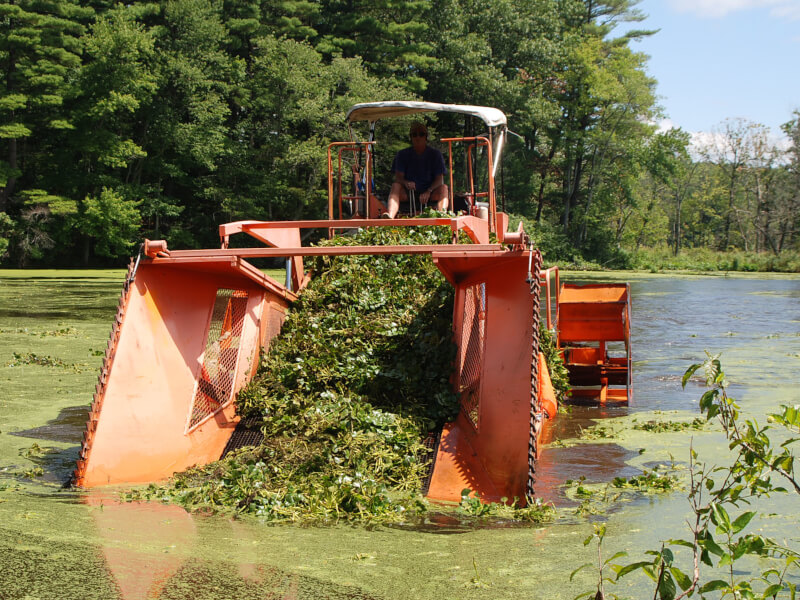
Mechanical Harvester
A floating mechanical harvester can used for lake weed removal in large lakes or ponds. The mechanical harvester contains a cutting mechanism and steel conveyor belt that transports removed growth to an onboard holding area. Then, the organic matter is off-loaded at the shoreline, dewatered, and eventually transported for disposal away from the site. Harvesting once or twice a year can help keep undesirable growth in check on most waterbodies, but herbicides can also be used in conjunction to target stubborn growth. This method is most commonly used for floating weeds that reside on the water’s surface.
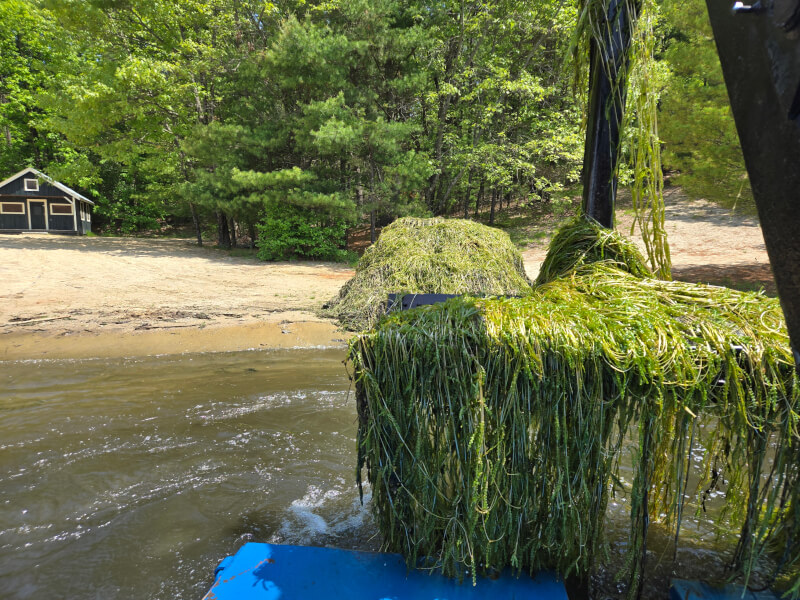
Hydro-raking
A hydro-rake is a floating barge equipped with a large rake attachment that can scoop up to 500 pounds of muck and rooted plant matter in each scoop. The hydro-rake can provide up to 3 years or longer of nuisance plant control, making it a popular natural control method. Mechanical hydro-raking is especially effective for emergent plants, easily breaking up complex root systems in wetlands or marshes.

Less Common Aquatic Weed Control Alternatives
For smaller infestations or those looking for hands-offpond weed control, triploid grass carp can be an effective option. Grass carp are voracious eaters that enjoy feeding on many submerged weeds. However, grass carp are not a suitable solution for every waterbody – and in some states, they are not legal – so it’s important to confer with local freshwater management professionals.
Pond weed removal can also be done by physically removing the plant by hand. While it isn’t a feasible management technique for large infestations, recurring spot treatments can help keep invasive growth at bay. It’s important to note that the physical removal of some plants like hydrilla is not recommended as it can spread through fragmentation.
Cutting and burning may be necessary for some nuisance species found in marsh or wetland areas. Phragmites australis, for example, can take years to eradicate due to their expansive root systems and ability to reproduce through fragmentation, so an aggressive, multi-year management program is key. As with other plant species, pesticides can be used when necessary.
Long-Term Aquatic Weed Prevention and Control With SOLitude
Pond weed control is possible, but it can be difficult, time-consuming, and expensive. It can also have lasting effects on native plant and animal populations by disturbing the ecological balance of their natural habitats. That’s why the best management approach is year-round preventative monitoring.
The most effective annual programs are built on proactive strategies that help evaluate an aquatic ecosystem from several perspectives. This might include regular surveillance, recurring water quality tests, and swift intervention when a problem is identified. Depending on your aquatic ecosystem, professionals may implement nutrient remediation measures, biological bacteria applications, oxygen saturation, and other sustainable solutions to help maintain balanced water quality that is less hospitable to aquatic weed growth. Lastly, educating stakeholders on how pond weeds can grow and spread can help limit the introduction of unwanted plant species in your lake or pond.
Leave aquatic weed control to the experts at SOLitude. Contact us today.









